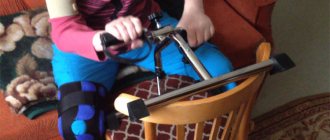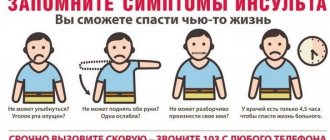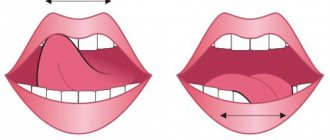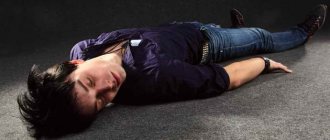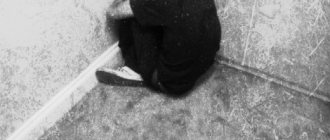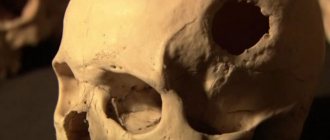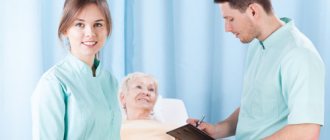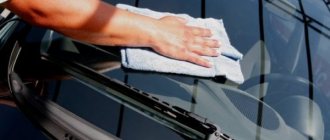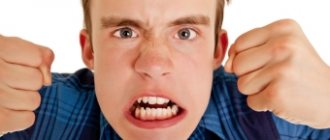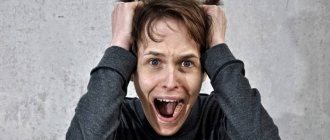Complete or partial immobility after a stroke leads to the fact that a bedridden patient completely loses the ability to independently eat, go to the toilet, and maintain personal hygiene. Therefore, he needs constant help from loved ones and proper organization of care. The development of complications significantly aggravates the neurological status and can cause death.
Caring for the sick at home
Treatment of a post-stroke patient after discharge continues at home. The rehabilitation period is quite long. With effective organization of care and activities with this group of patients, complete regression of clinical manifestations can be gradually achieved. Conversely, if care is absent or insufficient, the risk of irreversible neurological damage increases significantly.
Caring for a patient after a stroke requires patience and the acquisition of certain skills.
Medical staff should be trained in the principles of caring for a patient after a stroke
Normalization of pressure
If the patient suffers from hypertension or after a stroke from increased intracranial pressure, the following therapy is used:
- Diuretics;
- Angiotensin converting enzyme inhibitors;
- Calcium channel blockers;
- Adrenergic blockers;
- Antianglinal;
- In case of heart failure - cardiotonics, cardiac glycosides.
Hypertension requires special nutrition, control of salt and fluid intake.
Example of a special simulator
Nutrition
- In the initial period of rehabilitation, it is important to observe the conditions of mechanical and chemical sparing in preparing food for a post-stroke patient. That is, the food should be warm, liquid or mushy, without the use of spices.
- Often patients are unable to eat on their own for some time, or there are various types of eating disorders. The caregiver, depending on the degree of loss of independent care functions by the patient, should help in eating: support cutlery, feed the patient if necessary.
- The diet should be enriched with fruits, vegetables and meat, which are so necessary for the restoration of damaged brain structures.
It is very important to improve the patient’s nutrition after a stroke.
First aid for stroke
Stroke must be treated as quickly as possible. Therefore, if there is a sick person nearby, it is necessary to react quickly and do everything necessary to alleviate his situation.
Be sure to read:
Heart arythmy
First of all, you need to immediately call an ambulance or take the patient to a medical facility yourself.
Secondly, it is necessary to make sure that the patient suffered from a stroke.
The most obvious symptoms of the disease:
- crooked smile;
- incoherent and sluggish speech;
- limbs do not rise to one level, one is always lower;
- the tongue falls to one side.
It is not possible to cure a stroke victim on your own, but it is still recommended to take some measures:
- Make sure that the patient can breathe, clear his airways, and turn him on his side.
- Move the patient to a comfortable position and location.
- If possible, measure blood pressure and glucose levels and report the data to emergency physicians.
- Try to determine the moment of the onset of the stroke.
Do not try to reduce the victim’s blood pressure or give him food or water.
Prevention of infections
A weakened body is predisposed to the development of infectious processes. The condition is aggravated by the forced lying position of the patient. Stagnation of lymph and blood occurs, chest excursion decreases, which often leads to bronchopulmonary diseases. Infections can be prevented by following these recommendations:
- Carrying out daily chest drainage massage. Its correct implementation involves rubbing and tapping movements along the projection area of the lungs in the direction from bottom to top. The massage is carried out from all sides: chest, back and sides.
- It is important to exclude the patient from hypothermia and drafts.
- If the risk of infection is high, the doctor may prescribe antibiotic therapy for preventive purposes.
- During an influenza epidemic, vaccination is recommended for such patients, as they are at risk.
To prevent pneumonia, you need to regularly do breathing exercises
Bedsores
In bedridden or inactive patients, bedsores may develop over time if there is insufficient care. These areas of inflammation and necrosis occur in places of greatest pressure: lower back, buttocks, subscapular region. The pathological process begins with the skin and gradually deepens, reaching bone tissue. Stage 3 and 4 pressure ulcers require surgery to remove dead tissue.
Preventive measures can significantly reduce the risk of pressure ulcers in patients who have had a stroke:
- A general massage tones the muscles of the body and increases blood circulation, preventing blood stagnation.
- Timely hygiene procedures. If using a bath or shower is difficult, it is necessary to dry the patient several times a day.
- Experts recommend placing soft or inflatable cushions under areas of the body that experience maximum pressure. They reduce tension and prevent tissue compression.
- A special functional bed designed for bedridden patients perfectly relieves muscles.
To prevent bedsores, you need to purchase a special mattress
Change of bed linen
Freshness of bed linen is an important aspect for maintaining patient comfort. If the patient can relieve himself or uses a diaper, the underwear can be changed at least once every 5 days.
This can be done without moving the patient. To remove the underwear, the patient is turned on his side, one side is removed, then the other side. The new one is refilled in the same way.
Another method is characterized by the same actions, but the patient is raised and the linen is changed from the sides of the head, and then from the lower extremities.
Room hygiene
Similar article: Exercise therapy after a stroke at home
A person caring for a post-stroke patient must know the rules of hygiene of the room in which the patient is located.
- It is necessary to periodically ventilate the room, providing an influx of fresh air. But, as mentioned above, beware of the formation of drafts.
- It is recommended to carry out wet cleaning daily, especially carefully in the room where the patient is.
- Frequent change of bed linen is encouraged. Crumbs left in the bed after eating and wrinkles that have formed are additional risk factors for bedsores.
Left-sided paralysis
If the left side of the body is affected by a stroke, this means that the circulatory disorder affected the right hemisphere of the brain. Patients often experience impaired motor function and partial paralysis of the body. Often the patient cannot understand and realize the physiological disturbances resulting from a stroke.
In this case, the patient may try to get up and leave, resulting in injury.
Impaired perception of space after a stroke is expressed in the inability to estimate the actual size of objects and the distance to them. The bed with the patient is placed in the room in such a way that there is a door in the field of view of the right eye. Since the functioning side of the body is on the right, all the items necessary for the patient are placed on the right (bedside table, books, etc.). Impaired coordination of the patient's movements requires physiological exercises.
Exercise therapy
Nursing care of a patient after a stroke requires knowledge of physical therapy. For a faster recovery, the patient should perform individually selected exercises daily to help restore motor functions.
- If the pathological process affects the functions of the upper extremities, then first the patient will be taught to pick up and hold various objects. Then fine motor skills are restored: sorting out cereals and beads, folding puzzles, tying shoelaces and unfastening buttons.
- If the lower extremities are affected, the patient first masters the exercises while lying in bed. The “bicycle” is effective. The patient, in a supine position, rests his feet on the palms of the assistant and alternately bends and straightens his legs at the knee joints. Then the training moves to a horizontal position. The patient learns to walk, first with support and gradually moving to independent walking.
- Joint activities in the pool help a lot. Such workouts are gentle on a fragile body, but at the same time they are very effective.
Physical therapy will allow you to quickly restore functions lost due to a stroke
Treatment of stroke at home
After a stroke, it is necessary to follow certain rules that prevent possible complications. Treatment should be prescribed by the attending physician.
Drug treatment is important for recovery after a stroke. It is necessary to use drugs whose action is aimed at improving blood supply to the brain and restoring its activity.
These drugs include:
- Actovegin;
- Cerebrolysin;
- Vinpocetine;
- Pantogam;
- Piracetam;
- Cavinton.
These drugs help improve blood circulation in the brain and also stabilize metabolic processes in brain cells.
Be sure to read:
High blood pressure - how to treat
Patients are also prescribed a course of antidepressants and drugs that help calm the central nervous system.
Aspirin has been found effective after a stroke. However, taking it for a long time can have a negative effect on the intestines, so when taking aspirin you need to take medications that help improve the functioning of the gastrointestinal tract.
Diet is very important during rehabilitation after a stroke.
Basic principles of dietary nutrition:
- Eliminate salt from your diet or limit its amount to five grams per day.
- Eliminate sugar from your diet or limit its amount to 50 grams per day.
- Eliminate from your diet foods that contain large amounts of salt, as well as spices and vinegar.
- Avoid fatty meats, sausages, as well as fatty fish and mushrooms.
- Avoid eating fried, smoked and fatty foods.
- Consume as many vegetable soups or soups prepared with low-fat broth as possible.
- Include lean meat and fish in your diet.
- Eat more vegetables and fruits (except legumes, radishes, spinach and sorrel, as well as grapes).
- Avoid sweets, desserts and pastries, as well as carbonated drinks and fast food.
- Increase the amount of cereals in the diet, wholemeal bread.
The diet should be prescribed by a specialist. The victim's menu should be rich in fiber, vitamins and essential minerals, as well as protein.
Poor nutrition is often the cause of stroke.
Depending on the patient’s condition, the doctor prescribes physical exercises that promote recovery after the illness. They are aimed at restoring motor functions. Therapeutic physical education is the basis of rehabilitation.
When performing physical exercises, supervision from other people, for example, relatives, is necessary.
There is nothing difficult about physical exercise. But they need to devote time and effort.
Among the most effective exercises are the following:
- Flexion and extension of the limbs.
- Movements of the eyes in different directions and in a circle. It is recommended to do the exercise both with open and closed eyes.
- Swinging the affected limb using a loop.
- Flexion and extension of the fingers on the affected limb.
- Knee bending. The exercise is performed while lying on your back.
If the patient can stand, then lunges, squats, body bends, body turns and other exercises can also be performed.
Before starting the exercises, it is recommended to warm up the patient’s skin and give a massage. Class time should be about 30 minutes. It is recommended to perform exercises 2 times a day, depending on the condition.
Be sure to read:
Treatment of bradycardia at home for various symptoms
To recover from an illness, you can resort to alternative medicine.
Among them, the following are particularly noteworthy:
- To restore the speech apparatus, it is recommended to take a decoction based on sage.
- Tincture of gray jaundice helps to normalize the functioning of the cardiovascular system and improve the victim’s sleep.
- To treat paralysis, it is recommended to rub in an ointment prepared from bay leaf powder, spruce and pine needles and butter.
- To restore speech, coordinate movements, and also to thin the blood, a tincture based on pine cones is recommended. This is one of the most effective remedies, which also has a beneficial effect on the blood vessels of the brain.
- To rub paralyzed limbs, it is recommended to use a thyme-based tincture.
- To restore memory, infusions of mint and sage, clover and rowan bark are recommended.
- Vodka-based tincture of red clover flowers effectively helps with dizziness after a stroke.
Recovery must be comprehensive, including physical therapy, dietary nutrition, and medication. You cannot limit yourself only to traditional medicine.
Without continued treatment for stroke at home, a person develops irreversible anatomical and functional changes.
A rehabilitation program for home is developed by doctors taking into account the severity of the disease, the degree of independence of a person at home and his age. These are individually developed methods of influence that complement the prescribed medications.
Continuing recovery in the post-stroke period helps:
- prevent the development of complications;
- stop the progression of impaired functions;
- prevent relapse;
- partially or completely restore lost abilities.
Diet therapy is considered a fundamental factor in creating a nutrition program at home. Table No. 10 was developed for the group of cardiovascular diseases. This is a balanced food, the task of which is to normalize blood pressure and blood circulation, reduce the load on the heart and blood vessels.
At home, the diet is designed to:
- reduce the calorie content of dishes;
- limit salt intake;
- reduce cholesterol;
- increase intake of foods with potassium and magnesium.
To get used to the new menu and not feel hungry, the daily diet is divided into 4-5 meals. The list of products containing substances necessary for the body includes:
- fish;
- lean meats;
- nuts, dried fruits;
- cereals;
- fruits vegetables;
- vegetable oils.
Avoiding the following will help prevent the development of atherosclerotic plaques:
- pork, lard, sausage, smoked meats;
- conservation;
- alcohol;
- heavy cream, sour cream;
- sweets.
A lipid-lowering diet at home after a stroke cannot be short-term. Such nutrition should become the patient’s way of life.
More than half of post-stroke patients permanently have motor impairments. Often these are hemiparesis (half the body is affected) and monoparesis (paresis of one limb). Maximum efforts to restore lost functions are required within 2-3 months.
Exercises for the face after a stroke
But you cannot stop at the achieved level. Gymnastic training should be introduced into a regular lifestyle. Exercises after a stroke develop the level of self-care and help restore the function of a paretic arm and leg.
A set of exercises for gymnastics at home is developed by a physical therapy doctor. Each exercise trains movement in a paretic limb and stops pathological contraction of muscles, ligaments, tendons (contracture).
Therapeutic gymnastics is selected individually, taking into account the patient’s condition. In case of paralysis, relatives or an instructor help conduct passive gymnastics. Regular exercise activates neurons in the brain, which partially or completely compensates for neurological deficits.
The cognitive consequences of stroke manifest themselves in varying degrees of severity. Often this is aphasia (no speech) and dysarthria (impaired pronunciation). After a stroke, it is recommended to conduct classes at home with a speech therapist or neuropsychologist. In severe cases, the help of an aphasiologist is required. Specialists give many tasks for speech restoration and correction.
When memory is impaired, psychological disadaptation is noted. Such cases require performing memory training tasks. For this it is recommended:
- work with associations;
- play logic games;
- develop visualization;
- memorize poems, songs;
- solve crosswords.
Pressure correction
Much attention is paid to patients who have suffered a hemorrhagic stroke with a history of hypertension. To prevent another rupture of blood vessels, be sure to monitor blood pressure, since hypertensive hemorrhages occur in 70% of hypertensive patients.
In addition to antihypertensive therapy, rehabilitation at home is aimed at maintaining a healthy lifestyle, namely:
- adherence to an anti-sclerotic diet;
- quitting smoking and alcohol;
- physical activity taking into account the condition.
From the first days after a cerebral accident, an important stage of the rehabilitation period is the prevention of recurrent strokes and the fight against complications. The group of conditions unfavorable for the patient’s life includes:
- Pneumonia. Appears due to aspiration (penetration) of food debris into the respiratory tract in patients with impaired swallowing, impaired consciousness, or paralysis. In such patients, a nasogastric tube is installed for feeding, and the head end of the bed is raised by 45°. For seriously ill patients without a cough reflex, the resulting secretion is sucked out.
- Deep vein thrombosis. Blood clots provoke pulmonary embolism. In addition to anticoagulants and other drugs, gymnastics, massage, and leg bandaging with elastic bandages for varicose veins are required.
- Bedsores. They develop in the absence of care. Damaged skin integrity causes severe pain and necrosis. Sepsis poses a mortal danger in necrotic tissues.
- Urinary tract infections. They arise as a result of prolonged catheterization of the bladder and urination disorders. Because of this, it is recommended to limit the use of the catheter.
Psycho-emotional disorders
The illness suffered greatly affects the emotional state of the patient. Temporary loss of full social activity can lead the patient into a state of despondency and depression. In addition to the professional help of a psychotherapist, which may be needed, communication with relatives and loved ones is important.
The manifestation of love and participation on their part, warm conversations with the patient will help him accept his weak state and survive it. In addition, a positive emotional attitude increases the desire to be treated and increases the effectiveness of the therapy.
Restoring functions lost after a stroke is not always fully achievable. However, it is important to remember that a conscientious and timely rehabilitation process is the key to a speedy and maximum possible recovery.

